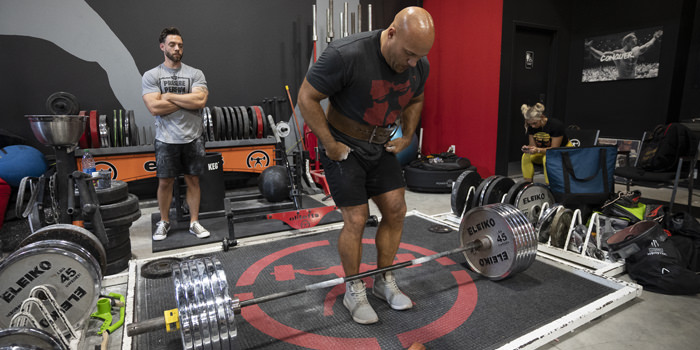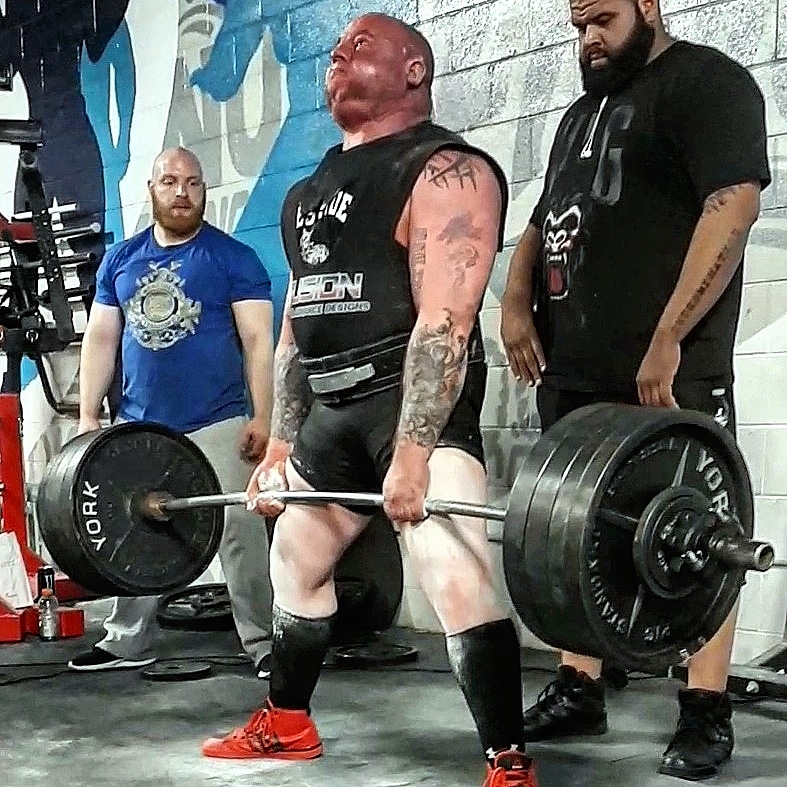
What should you be doing with your head during the deadlift? Should it be up, down, or neutral?
I will explain what was taught to me, what worked for me, what injured me, and what I could physically prove.
Unless otherwise trained, most lifters, including myself, want to look down at lockout during the deadlift. Looking down, unfortunately, cost me two separate partial bicep tears. Through video analysis, you'll often see the bar drop slightly and bounce as the head drops down, and POP! You're headed for surgery, or in my case, a lifetime of issues with your arms and an end to any chances at bodybuilding after your powerlifting career.
The only use I can imagine for looking at the ground at deadlift lockout is if you aren't entirely locked out. You know, that's all you have. Maybe you want to trick the judge into thinking you're fully locked, so you look down or at him to signal you're done pulling and hope for the best. The bottom line is you don't know what to do with your head.
I'm not built for the deadlift at all, but I can tell you what I was taught and how I managed to add 150 pounds to my deadlift after I thought I was entirely tapped out. One-hundred-and-fifty pounds was approximately 25% of my deadlift at that time.

Listen to the Legends
I'm not one for name-dropping, but I want you to understand that what I learned came from two of the greatest powerlifters to ever train at Westside Barbell. I trained for many years under Dave Hoff and then Phil Harrington and both are big proponents of throwing your head back hard and finishing looking upwards at approximately 45 degrees.
They drilled this in my head every week on deadlift day, and I began to teach it to my lifters in my gym at the time at Amherst Powerlifting Club, with great success. In the most basic terms you've heard before, being coached on the squat, "Lead with your head, and the body will follow."
Around that time, I was hosting regular WPC, IPA, and TENDO-sponsored meets with two Tendo Units. For those that don't know, a Tendo Unit is a device that is physically attached to the bar via a string and measures bar speed. There's even a funny story from Westside Barbell about them, where supposedly, the boys were so competitive to beat each other's numbers, poor form and fighting ensured and resulted in Louie Simmons tossing the Tendo unit up on the roof to be rid of it.
I gave one away as the best lifter prize and kept the other. It was a short-lived novelty in my gym as well, but I did manage to put it to one good use, proving that bar speed increased with a lifter throwing their head back instead of tucking their chin at lockout.
Conclusion
I tested this on myself, plus a dozen lifters, seasoned and novices. The result?
In every single case, the lifter's bar speed increased significantly by forcefully tossing the head back. In addition, I had each lifter pull with dynamic effort weights, of which we used approximately 50-70% multiple times, some with the head back and some with chin tucked. The bottom line is the faster you can finish a lift, the better your chance of completing that lift.
When performing the head toss, which may sound silly, the mental cue for me was to imagine my head being whipped back as if in an eight-second drag car.
Some will say, "I'm a 900-pound plus deadlift and tuck my chin; what do you know?"
First, I know that if you haven't yet torn a bicep, you're fortunate thus far. Two, no matter what I deadlift, the possibility of adding any amount to your deadlift should be at least explored and tested.

Nathan Robertson is the previous owner of Amherst Powerlifting Club in Nova Scotia, Canada, and the current owner of Berserker Barbell in Saskatchewan, Canada. He competed for 25+ years in powerlifting, is an IPA Canada Chairman, and is an IPA and WPC International Judge. Nathan is one of only six 1000-pound squatters in Canada and a Top-10 overall Bencher in Canada. He is also a multiple IPA World Record Holder.










3 Comments